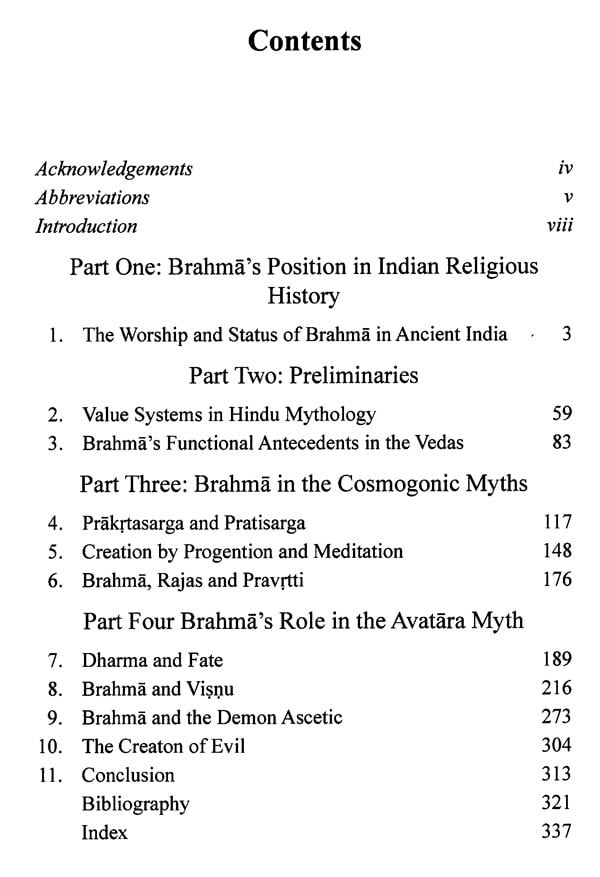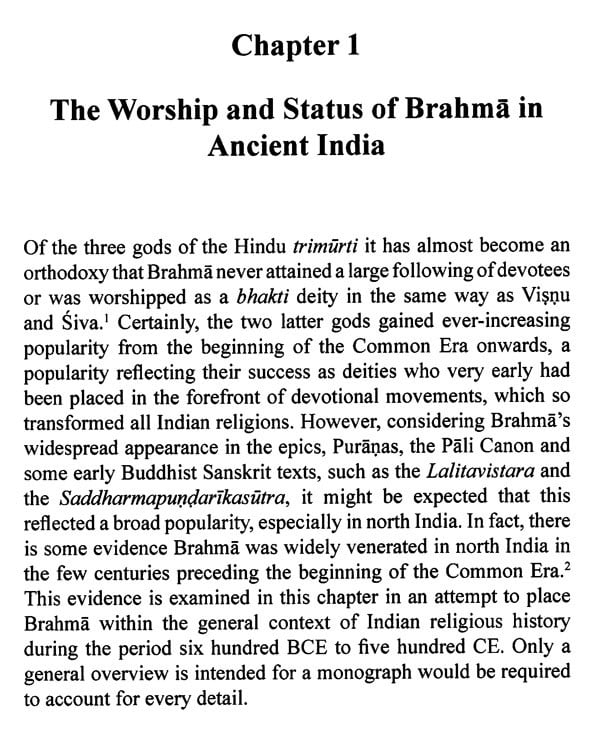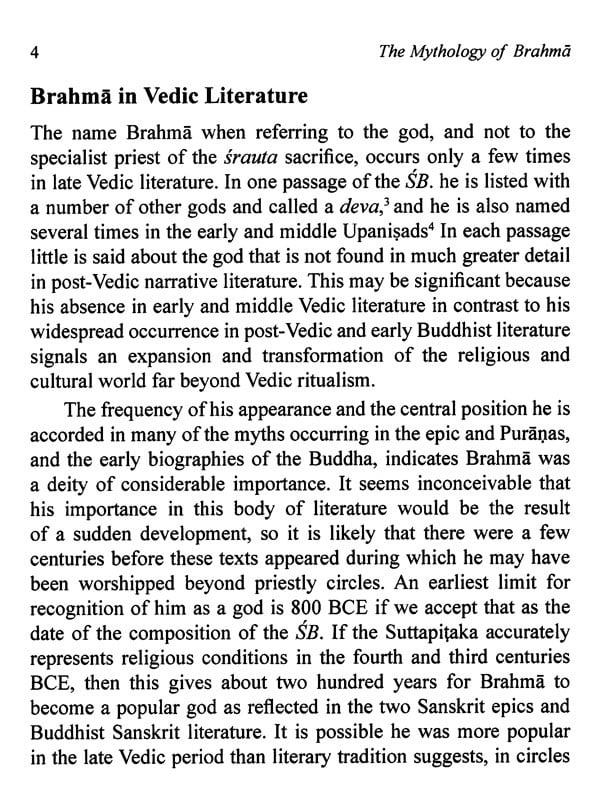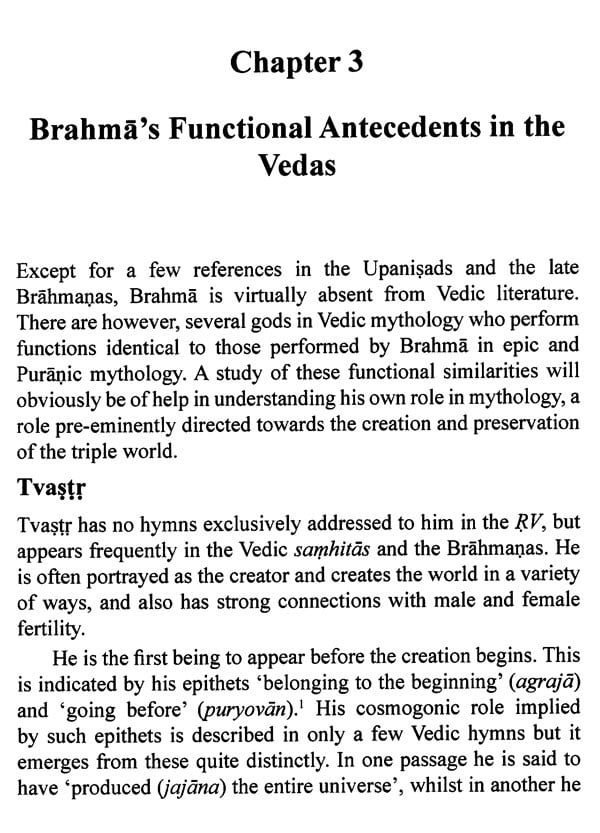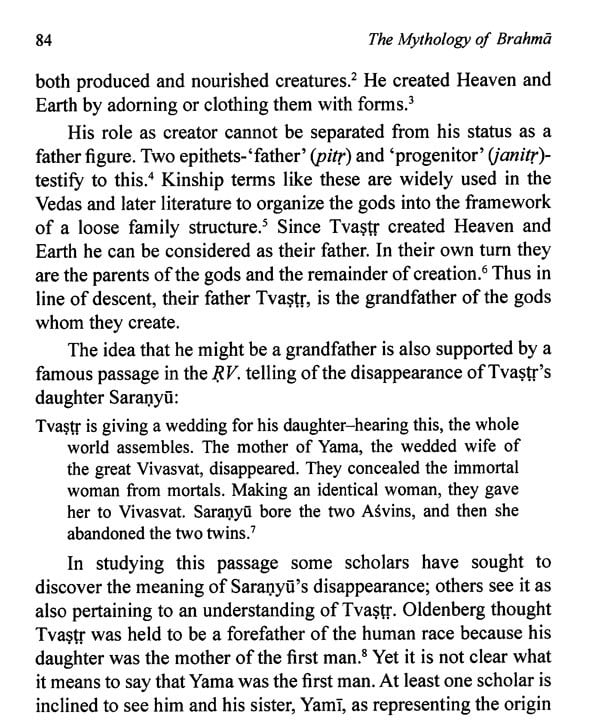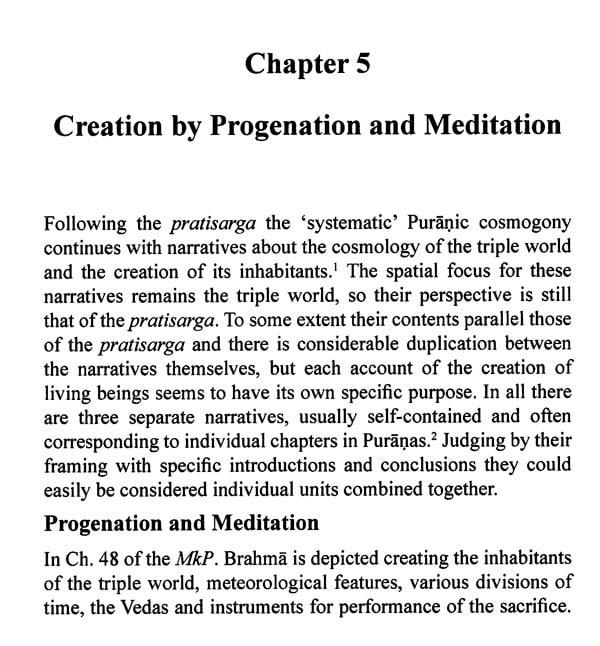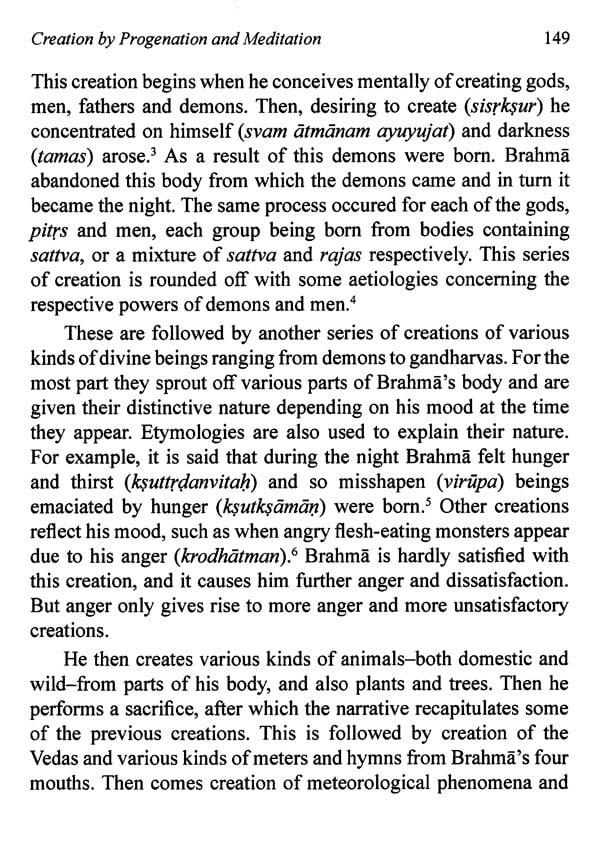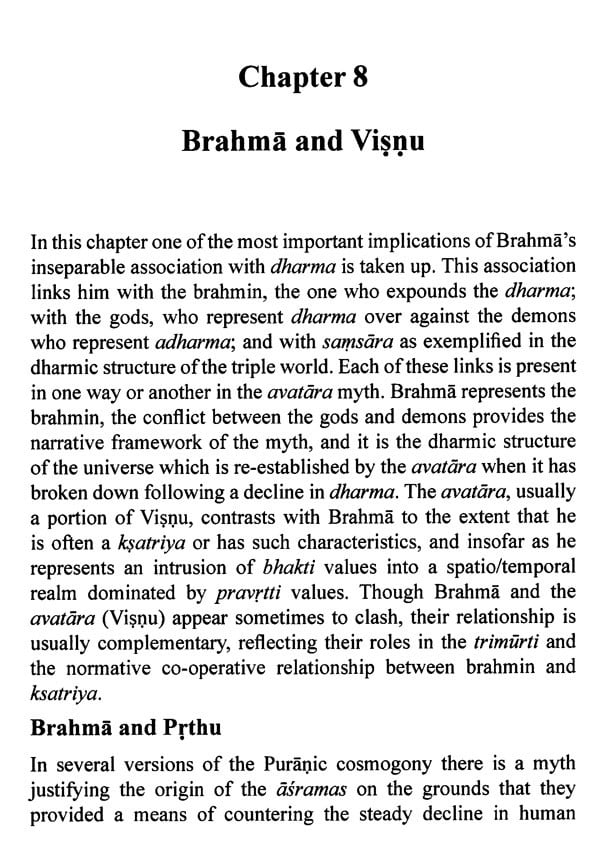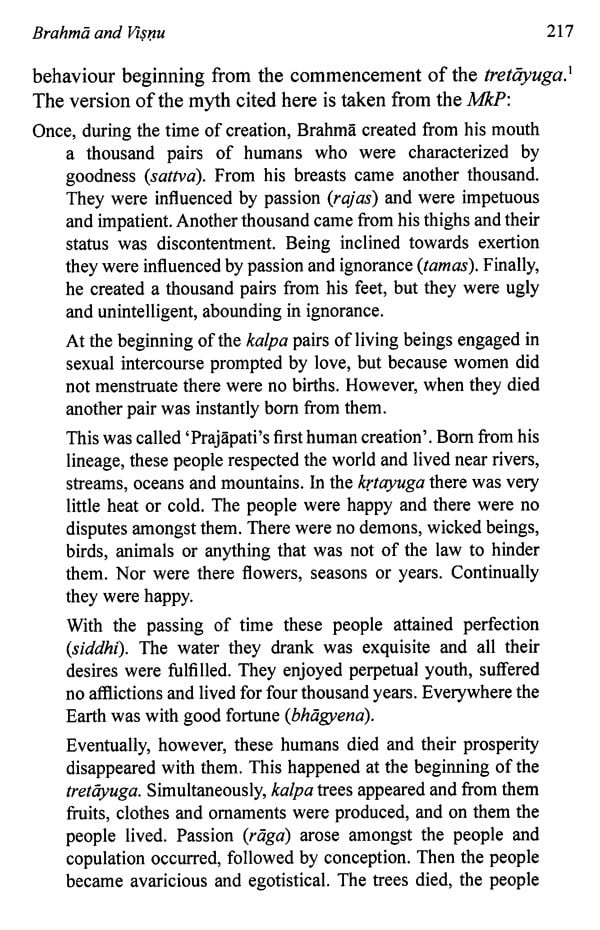
Mythology of Brahma
Book Specification
| Item Code: | NBZ947 |
| Author: | Gregory Bailey |
| Publisher: | Motilal Banarsidass Publications, Delhi |
| Language: | English |
| Edition: | 2021 |
| ISBN: | 9788194815891 |
| Pages: | 345 |
| Cover: | HARDCOVER |
| Other Details | 9.00 X 6.00 inches |
| Weight | 550 gm |
Book Description
In Hindu Mythology Brahma is renowned as the creator of the three worlds and of the system of rules (dharma) that holds them and their inhabitants together. This is originally a substantially revised edition of a book published in 1983 and it focuses on Brahma's role in mythology, his representation of worldly values (pravrtti) and his role as both disseminator of dharma and as its protector in conjunction with Visnu. It also examines evidence for his worship in ancient India and his significance in early Buddhist literature.
Greg Bailey, formerly Reader in Sanskrit, is an Honorary Research Fellow in the School of Arts, Social Sciences and Communications, La Trobe University, Melbourne. He has published translations and studies of the Ganesa Purana, Bhartrhari's Satakatrayam and books on early Buddhism and many articles on Sanskrit literature. At present he is working on social, literary and economic aspects of the relationship between early Buddhism and the Mahabharata.
The purpose of this book is to examine Brahma's distinctive position, and the meaning of his roles, within the broad ensemble of Indian mythology. In general his mythology has only been studied in relation to that of Visnu or Siva and not as a subject with an intrinsic value of its own. Although there have been several brief studies devoted exclusively to Brahma, all have tended to lay stress on quite specific aspects of his mythology at the expense of a comprehensive view. Some monographs which have attempted a cross-sectional view over the whole field of Hindu mythology have provided a moderately comprehensive picture of this god's mythology, yet because of their breadth they have only elicited a superficial understanding of it. The net result of both kinds of studies is a multiplicity of interpretations of the god's mythology. No general accord has been reached on the question of his distinctive place in Indian mythology or on the meaning of his mythology. This in itself is sufficient reason for a new study of the god.
In Indological scholarship over the past two hundred years the god Brahma has been focused upon because of his pre-eminent role as the creator god in the trimurti comprising himself, Visnu and Siva, and because, unlike the latter two gods, he never seems to have acquired much of a devotional following. That situation may be expressed as a paradox: Brahma plays a major role in mythology, whilst seemingly not being worshipped as an object of devotion. Nor does he appear to be a prominent god in Vedic literature, becoming important in the Mahabharata, certain Pali texts, and continuing to be prominent in Puranic mythology to the extent it develops beyond what is found in the MBh, and the Ram. to a much lesser extent. As creator of everything in the creation of the universe his role becomes fundamental given the attempt to systematize cosmogony in terms of creation, preservation and finish (destruction), a systematizing process reaching its fullest development in the Puranas. This systematization may well have been a theoretical development designed to impose a kind of order onto a conception of the universe in terms of a very long-term historical origin, transformation and completion, a conception requiring a theological/mythological justification to sustain it, given the premier importance of mythology in South Asia as a mode of communication of cultural and religious truths.
The continuation of Hindu mythology over two thousand years guaranteed that Brahma retained a prominent position in the awareness of most Hindus. This has been so even where he was not worshipped along the lines of the important devotional gods and goddesses, whose popularity partially rests on a belief in their capacity to provide immediate benefits to their worshippers. In this sense he is like Indra, who continues to play a role in mythology, but rarely receives worship in a devotional context.
Yet Brahma is not simply important because of his role in the cosmogony. In several ways he is associated with foundational forms of knowledge, the sacrifice and the status of the brahmin as defining the correct workings of the orthoprax society. What this means is that he is powerfully associated with correct forms of knowledge and its dissemination, just as Visnu is associated with kingship as the preeminent mode of maintaining social and cosmic order, and Siva with destruction-epitomized in his destruction of Daksa's sacrifice-and disdain for society reflected in his asceticism. As such this complicates any kind of simplistic view as to how his role in mythology might be understood.
Both aspects-his role as creator and his connection with the brahmin class in all of its aspects-are significant not just because of their expression in Hindu myths, but also because it is these two themes that are so strongly connected with him in early Buddhist literature, mainly in Pali, but also occasionally in Sanskrit. In almost all cases where he appears in Pali literature he is an object of satire, as if the authors of these texts somehow saw him as a competitor of the Buddha, and arguably believed his role as creator necessarily conferred a very high status upon him as a god emerging out of the decline of the pantheon associated with the Vedic thirty-three gods. He is much less of an object of satire in Buddhist Sanskrit literature, probably because it was composed at a time when Buddhism had become firmly established across South Asia in a very conspicuous and institutionalized manner. But the importance in Pali literature of his recognition as creator and disseminator of knowledge is significant in providing us with at least one 'external' interpretative frame by which to understand his mythological roles as they are found in Hindu literature where he is usually not treated as an object of satire.
What I have learnt during the thirty-six years since this book was first published is that the period-let us say 300BCE-200CE-where Brahma is given widespread exposure in both the MBh. and the earliest Puranas as well as early Buddhist literature, was one of considerable transition in most aspects of South Asian culture and society: Buddhism was becoming very firmly consolidated in terms of following and financial wealth; the class system was becoming institutionalized as a means of providing some kind of theoretical structure for a society becoming increasingly complex; small scale societies were being replaced by large-scale societies; the brahmins were under increasing pressure to define their role as the class of educators and ritual specialists in the face of an expanding range of religious options; theories of kingship involving maintenance of the normative society were being developed; and the extensive mythology inherited from Vedic tradition was being both vernacularized and systematized in order to take account of the avatara theory and the theology of the trimurti, both given a sense of immediacy to the broad population by the inclusion of devotional material.
**Contents and Sample Pages**
